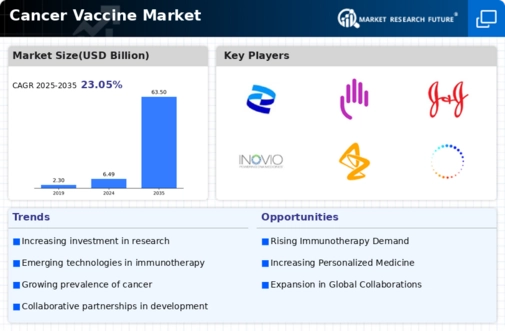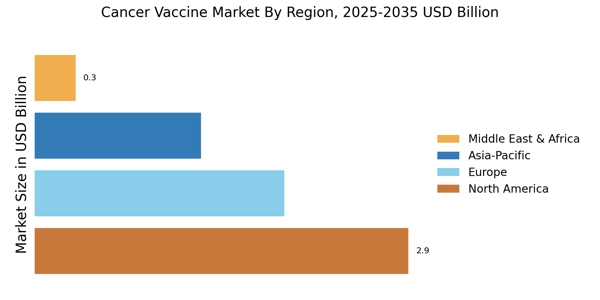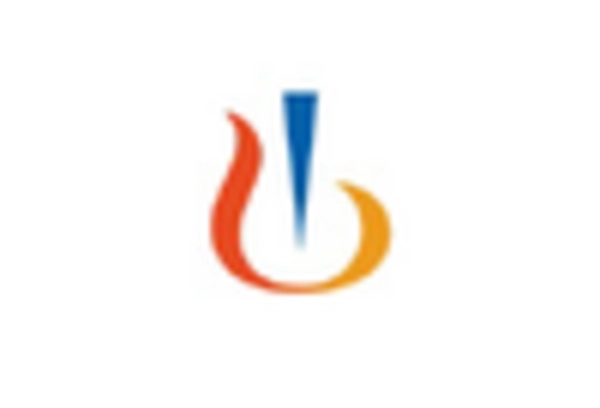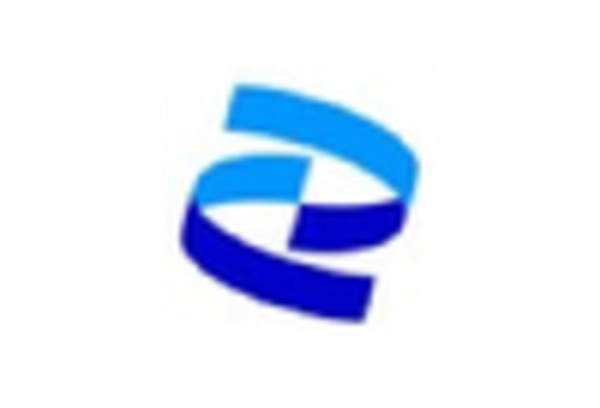Rising Incidence of Cancer
The increasing incidence of cancer worldwide serves as a primary driver for the Cancer Vaccine Market. According to recent statistics, cancer cases are projected to rise significantly, with estimates suggesting that by 2040, the number of new cancer cases could reach 30 million annually. This alarming trend underscores the urgent need for innovative treatment options, including vaccines. As healthcare systems grapple with the growing burden of cancer, the demand for effective vaccines is likely to escalate. The Cancer Vaccine Market is thus positioned to expand as pharmaceutical companies invest in research and development to address this pressing health challenge.
Advancements in Immunotherapy
Recent advancements in immunotherapy have catalyzed growth within the Cancer Vaccine Market. Immunotherapy, which harnesses the body's immune system to combat cancer, has gained traction as a viable treatment option. The market for immunotherapy is expected to reach approximately 100 billion USD by 2025, indicating a robust interest in this field. Cancer vaccines, as a subset of immunotherapy, are increasingly recognized for their potential to enhance patient outcomes. The integration of novel technologies, such as mRNA and dendritic cell vaccines, further propels the Cancer Vaccine Market forward, as these innovations promise to improve efficacy and safety profiles.
Government Initiatives and Funding
Government initiatives and funding play a crucial role in shaping the Cancer Vaccine Market. Various governments are prioritizing cancer research and vaccine development, allocating substantial resources to support clinical trials and innovative therapies. For instance, funding for cancer research has seen a marked increase, with billions of dollars directed towards developing new vaccines. These initiatives not only foster collaboration between public and private sectors but also stimulate advancements in vaccine technology. As a result, the Cancer Vaccine Market is likely to benefit from enhanced research capabilities and accelerated product development timelines.
Growing Investment in Biotechnology
The surge in investment within the biotechnology sector significantly influences the Cancer Vaccine Market. Venture capital and private equity firms are increasingly channeling funds into biotech companies focused on cancer vaccine development. In 2023 alone, investments in biotech reached over 50 billion USD, reflecting a strong belief in the potential of innovative therapies. This influx of capital enables companies to advance their research and development efforts, leading to the emergence of novel cancer vaccines. Consequently, the Cancer Vaccine Market is poised for growth as new players enter the market and existing companies expand their portfolios.
Increased Focus on Preventive Healthcare
The heightened focus on preventive healthcare is driving the Cancer Vaccine Market forward. As awareness of cancer prevention grows, individuals and healthcare providers are increasingly recognizing the importance of vaccination as a proactive measure. This shift in mindset is reflected in the rising demand for preventive vaccines, particularly for cancers associated with viral infections, such as HPV and Hepatitis B. The market for preventive cancer vaccines is projected to expand, with estimates suggesting a compound annual growth rate of over 15% in the coming years. This trend underscores the potential for the Cancer Vaccine Market to thrive as more people seek preventive solutions.


















Leave a Comment